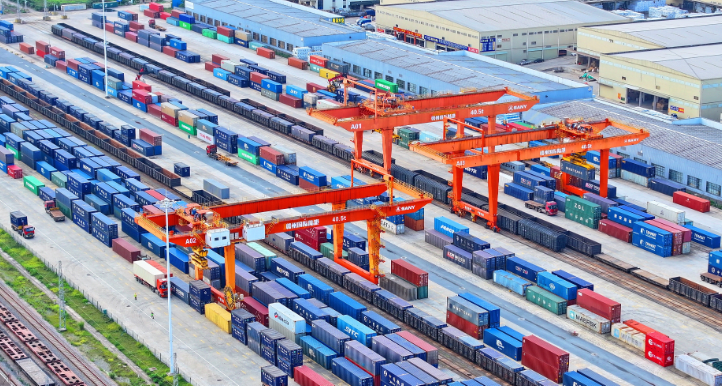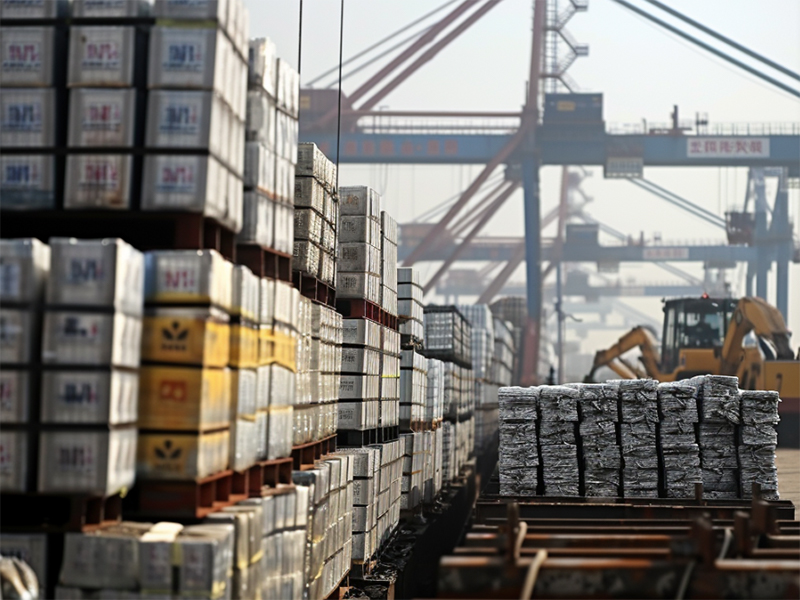Export Growth Surpasses Expectations at 7.1% in January-February: What Drove the Surge and What Lies Ahead?
Author: Jeff Zheng
The General Administration of Customs released data on March 7th, revealing that China's total merchandise trade volume for the first two months of 2024 amounted to $930.86 billion USD, marking a 5.5% year-on-year increase. Among this, exports stood at $528.01 billion USD, showcasing a remarkable growth of 7.1%, while imports reached $402.85 billion USD, up by 3.5%. Consequently, China's trade surplus widened by 20.5% to $125.16 billion USD.
In terms of the reasons behind the remarkable performance, experts attribute the surge in exports during January-February to both domestic policy efforts aimed at stabilizing foreign trade and the resurgence of international market demand.
Externally, improvements in foreign demand are evident. Morgan Stanley's Global Manufacturing PMI has remained consistently above the expansion threshold since January, ending 16 consecutive months of contraction and signaling a marginal improvement in external demand at the beginning of the year. Notably, key exporting countries such as Vietnam and South Korea have experienced overall positive growth in their exports since January-February, with accelerated growth rates compared to the fourth quarter of the previous year. Additionally, a pre-Chinese New Year export surge, especially in key products such as household appliances and automobiles, has surpassed expectations.
A significant factor contributing to the overall export performance exceeding expectations is the substantial improvement in China's exports to the United States during January-February, growing by 5.0% year-on-year. This acceleration, up by 11.9 percentage points compared to December of the previous year, is primarily attributed to the recent strong performance of the US economy and its faster import demand growth.
Furthermore, exports to Southeast Asian countries have also witnessed an upward trend during the same period, showing synchronicity with exports to the United States. This is because many Southeast Asian countries import intermediate products from China, process them, and then export them to the United States.
Another driver of China's export growth during January-February has been its exports to its top trading partner, ASEAN, which increased by 6.0% year-on-year, accelerating by 12.1 percentage points compared to December of the previous year.
Looking ahead, experts caution that while the current strong trend in foreign trade is promising, its sustainability remains uncertain. Factors such as a potential slowdown in the US economy and ongoing efforts by major central banks to tighten monetary policy may affect global demand. Additionally, uncertainties surrounding trade investigations targeting China's exports, particularly in the solar energy component sector, pose challenges to sustaining rapid export growth throughout 2024. Therefore, while expectations are optimistic, monitoring international economic trends and policy developments will be crucial in assessing the trajectory of China's foreign trade in the coming months.
On the import front, although there has been a positive growth trend in January-February, driven by a lower base comparison and the rebound of commodity prices, sustained recovery in domestic import demand remains elusive amidst sluggish real estate investment and consumer spending. It is anticipated that March's comprehensive resumption of manufacturing and infrastructure construction post-holiday will stimulate marginal growth in import demand. However, it may not fully offset the downward pressure on year-on-year import performance caused by base effects. As such, March's import growth rate is expected to slow compared to the cumulative growth rate of January-February, with a slight possibility of turning negative.
In summary, while China's foreign trade has shown resilience and exceeded expectations in the early months of 2024, uncertainties persist regarding its sustainability. A cautious approach is warranted, considering potential shifts in global economic dynamics and ongoing trade-related challenges.






